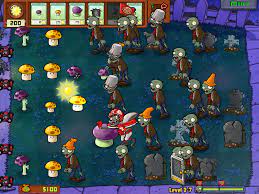For this Critical Play, I played two games from the tower defense genre available on the iOS platform, The Battle Cats (created by Ponos) and Plants vs Zombies (created by PopGames). In both games, the player aims to win each level by defending territory against enemies generated by the game. The fun comes from the challenge of managing resources to strategically choose and deploy a set of offensive and defensive characters against increasingly difficult enemies.

In The Battle Cats, the theme is managing an army of cats who are out to conquer the world. The player attacks a different country in each level, which is initiated by choosing the next country from a list on top of a map of Asia.
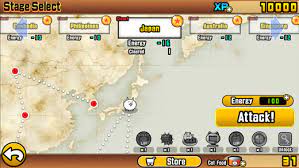
The graphics are fairly simple, with a green field separating the player’s tower from the enemy’s tower (which is decorated to reflect the country for that level). The cats deployed by the player and the enemy are simple black and white cartoon drawings. The theme of conquering territory is reflected in the player’s movement toward the enemy tower, which must be defeated to win the level.
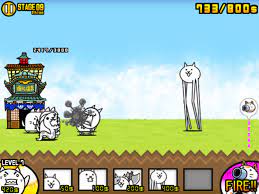
Game currency increments at a fast pace in the upper right corner, and the quickly changing numbers create a sense of urgency. Players must manage decisions about which cats to deploy and when to instead “level-up” by clicking the cat in the lower left corner. One thing I found frustrating about the game was that the function of the “level-up” cat was not immediately obvious and was not described in the help. It appears to increase the maximum amount of currency that can be held and possibly to increase the damage inflicted by the cats. The designers encouraged its use by making it the first action available for purchase. One interesting choice the designers made was for the defensive cat laser-cannon to have a very limited range. The enemy characters have to get fairly close to the player’s tower in order for it to be useful, so the laser-cannon mainly functions as a way to prevent losing the level,
The player’s dynamic experience of the level centers around how much ground has been gained or lost, which indicates progress toward winning or losing the level.
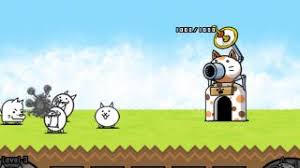
Anxiety increases when the enemy pushes the player’s cats back toward the player’s tower, and excitement increases as the player pushes the enemy toward their tower.
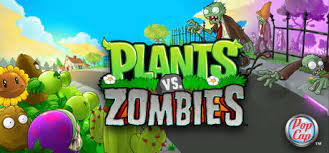
In Plants vs Zombies, the theme is defending your home from invasion by zombies. The player chooses and places a set of plants on the lawn between the home and the street.
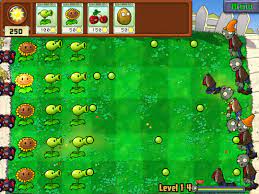
Each plant has a different capability: offensive (pea shooters cause damage to the zombies), defensive (zombies stop to eat walnuts, which slows them down), or resource generating (sunflowers generate extra in-game currency). Game currency (represented by sunlight) and recharge rates are designed to limit which plants can be deployed and force the player to make strategic choices about how much to spend and in what order to purchase the plants. These decisions use up mental energy and the sense of urgency is increased by the steady forward motion of the zombies. In this game, the player’s dynamic experience centers around how many zombies are present on the lawn and how close they are to the house. In the early levels it is actually very difficult to lose the level. This was a deliberate choice by the designers, who wished to make a game that would be fun even for non-gamers to play.
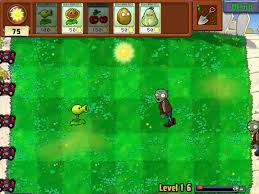
To reduce frustration, the designers included a lawnmower mechanic that will eliminate a whole row of zombies if one happens to reach the house. Despite the presence of this safety mechanism, player anxiety increases as zombies get closer to the house and as the final wave of the level floods the lawn with zombies.
